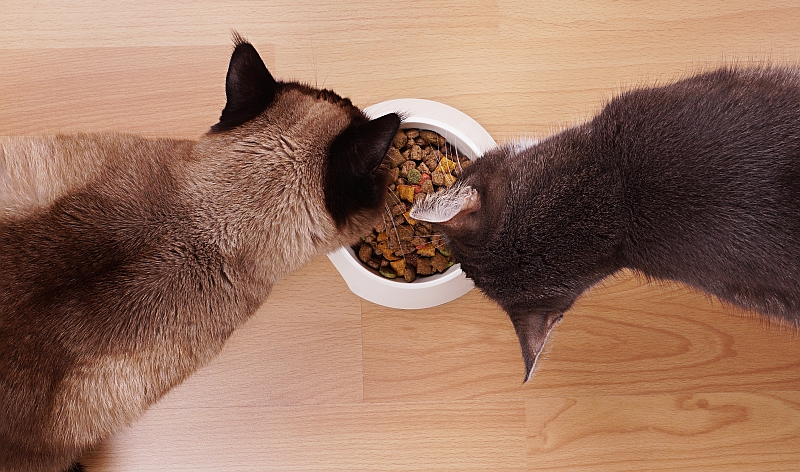Like many other questions, when it comes to pet care, the answer will vary due to a variety of factors. Some breeds, for example, do best when eating several small meals, while others may do best with a single meal. So let’s review the different factors that should be taken into consideration when feeding your cat.
Kittens require more food to support their growing bodies, and due the volume of food that they need it is not possible to give them all their food in one feeding, so their food should be divided into three or four daily portions. Up to the age of six months, a kitten will do well on three to four portions per day. Of course, the amount of food should be based on the cat food manufacturer recommendations or your veterinarian’s advice. Once your kitten has reached the age of six months (until adulthood), she will do well with twice-per-day feedings. After your cat has reached adulthood, she can be fed once per day, assuming there are no other mitigating circumstances, such as health needs. Some senior cats may require smaller amounts of food portioned over several meals in order to maintain digestive health.
Other Factors That May Impact Feeding Frequency
Most people live busy lives, which require them to be away from their home for extended periods during the day, so their personal schedule may dictate the number of times their cat can be fed. If your mornings are hectic, then feeding your adults cat once per day in the evenings is perfectly ok. With the same token, if your evenings are more demanding, then a morning feeding may be more appropriate for your situation, as long as you can maintain a consistency in the time at which your cat gets fed.
Other Options
Unlike dogs, cats should not have a dry food only diet, as it may result in them not having enough water intake just from drinking water. It is tough to get your cat to drink more water, so it is recommended that she get not only dry food, but also canned (wet) food. Since dry food will not readily spoil, often cat owners will leave out a dish of dry food throughout the day, supplemented by a canned food feeding once in the morning and once in the evening. This approach helps keep the cat satisfied throughout the day, and still provides the moisture content they need form the wet food. Of course, it is important to limit the amount of food (including the dry food) to what is recommended for your cat’s breed, age, health, and weight. Overfeeding is always an easy way to negatively impact the health of your pet.
At the end of the day, each cat is different, and you should pay attention to its preferences, appetite, and needs in order to develop and maintain a healthy feeding schedule, in collaboration with your veterinarian.
If you have a cat, you can check out entry about how often you should feed your dog.

